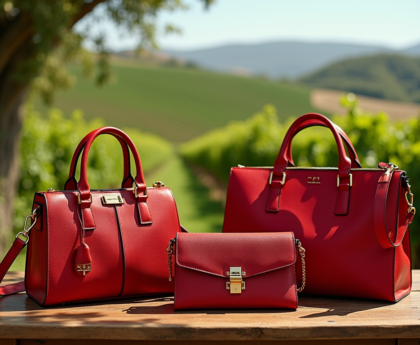Understanding the Nature of Diamonds
Natural diamonds, formed deep within the Earth over billions of years, are not only revered for their beauty but also for their perceived rarity. However, this scarcity is somewhat exaggerated. In truth, the supply of diamonds is more than enough to meet global demand, but controlled distribution gives the illusion of rarity, which justifies the highest prices at retail. The reality that emerges in the resale market, however, often presents a stark contrast.
Diamonds are considered a unique asset. They are valued based on a highly subjective grading system that assesses cut, color, clarity, and carat weight—the four Cs that dictate a diamond’s overall quality. However, this system, while intended to standardize valuation, does not translate directly into resale prices, leaving many to wonder why their cherished one karat gem does not fetch the much higher prices they expect when selling.

Diamond Pricing: The Basics
- Initial Purchase Price: This is the price consumers pay when buying a new diamond from a retailer. It is often set much higher than the intrinsic value of the stone due to retail markups, branding, and the costs associated with store operations.
- Resale Value: The price that a diamond fetches in the secondary market is often significantly lower than the initial purchase price. This value fluctuates based on current market conditions, the quality of the diamond, and the ease of transaction in the resale market.
The retail price not only covers the cost of the diamond but also includes the retailer’s expenses and profit margins. As a result, resale values are almost always so much lower because these retail markups are no longer part of the equation when a diamond is resold.
The Reality of Diamond Resale Value
When it comes to reselling diamonds, most owners find that the resale market does not offer the same financial advantages as the retail space. This is primarily because diamonds, once purchased, are considered pre-owned—akin to driving a new car off the lot, their value depreciates instantaneously. Unlike gold, which has a relatively fixed market value per ounce, diamonds do not have a universally agreed-upon monetary worth, making their resale values much more fluid and often much lower.
Factors Affecting Diamond Resale Value
- Rarity and Uniqueness: Each diamond is unique, but rarity factors into resale value. Uncommon characteristics, such as naturally occurring fancy colors, can command higher prices. Nonetheless, a standard cut, clear one-karat diamond might not be as rare as anticipated and could also realize some of the lowest resale prices.
- Market Demand and Desirability: Trends and consumer preferences dictate demand. Lab-grown diamonds, for example, offer better quality at much lower prices, affecting the desirability, and hence the value, of natural diamonds in the resale market.

The Role of De Beers and Market Control
The narrative of diamonds as a symbol of eternal love and luxury is not only an intrinsic belief but is largely a construct of one of the industry’s most influential players, De Beers. For decades, De Beers controlled a significant majority of the diamond market, effectively creating a monopoly that allowed them to dictate prices and manage public perception. This cornerstone of the diamond industry successfully forged the connection between diamonds and marital commitment, reflecting the “A Diamond is Forever” slogan that resonated so much globally.
In the early 20th century, De Beers faced the threat of a saturated market with the discovery of vast diamond mines in South Africa. To manage this potential decline in diamond prices, they executed one of the most successful marketing campaigns in history, creating an artificial scarcity and elevating the status of diamonds to a must-have item for engagements and marriages.
| Topic | Explanation |
|---|---|
| Introduction | Diamonds have a reputation for being valuable, but their resale value is often much lower than their initial purchase price. |
| De Beers’ Influence | De Beers historically controlled the diamond market, artificially inflating prices and limiting the supply of diamonds. |
| Market Saturation | The diamond market became saturated with stones, causing prices to decrease and making resale values lower. |
| Consumer Perception | Consumers are often unaware of the true value of diamonds and may not see them as an investment, further reducing resale value. |
| Alternative Investments | Investors may prefer other assets with higher resale value and better liquidity. |
| Conclusion | The resale value of diamonds remains low due to a combination of market factors and consumer perception influenced by De Beers’ historic market control. |
Evaluating Diamond Resale Channels
Navigating the diamond resale market can be a daunting task, as the avenues for reselling diamonds are numerous and varied. Traditional channels include jewelry stores and pawn shops, but these can often give the lowest prices due to the need for these businesses to make a profit upon resale. In recent times, online marketplaces have emerged as a popular alternative, providing a broader audience and thus the potential for higher resale prices.
- Retail vs. Secondary Markets: Most diamond resale occurs in secondary markets – places where pre-owned goods are sold, such as auction houses or online platforms – because jewelry stores typically seek to sell new items for higher profits. Auction houses might fetch better prices for rare and high-quality diamonds, but this comes with no guarantee and often much higher seller fees.
- Online Marketplaces and Auctions: Selling diamonds online could also yield the highest resale values, particularly if the platform caters to a niche audience looking for specific types of jewelry. Selling directly to end consumers sidesteps the middleman, potentially garnering a better return. However, sellers must have a good understanding of their diamond’s worth and be prepared to answer buyer queries.
Strategies to Maximize Resale Value
- Proper Certification and Appraisal: Obtaining a certificate from a reputable grading entity such as the Gemological Institute of America (GIA) can authenticate a diamond’s quality. An appraisal can give an estimated retail replacement value which, while not indicative of resale value, can be a benchmark for negotiation.
- Diamond Upgrades: Enhancing the setting or cutting the stone for better proportions, symmetry, and polish can sometimes increase the value of a diamond. It’s a risky move, as re-cutting can result in carat loss, but it could also transform a mediocre stone into one that’s much more desirable.

Conclusion
The low resale value of diamonds is a multifaceted issue influenced by market perception, industry manipulation, and the disparity between retail and resale markets. Although diamonds signify luxury, status, and emotional significance, these factors do not necessarily translate to high resale values. The stark reality is that most diamonds do not have the same financial liquidity as other investment commodities and suffer from depreciation once they leave the jeweler’s display.
To navigate the diamond resale market successfully, sellers must dispel the myths of perpetual diamond value and approach the process with educated strategies and realistic expectations. By accurately assessing their stone’s quality, choosing the right sales channel, and possibly enhancing their diamond’s desirability, sellers can aim for the highest possible returns given the circumstances. Nonetheless, diamond owners should be prepared for resale values to be much lower than the original retail price and understand that while diamonds last forever, their monetary value does not.
FAQs
1. Why can’t I sell my diamond for as much as I bought it?
Diamond prices are significantly marked up at retail to cover the costs of running the store and brand premiums. The resale market operates without these costs, so resale prices are often much lower.
2. Do engagement rings have better resale value than other diamond jewelry?
Not necessarily. While engagement rings are a popular and high-demand item, their resale value is still subject to the same factors as any other diamond piece, such as the four Cs.
3. Are certain diamond cuts or shapes more likely to retain their value?
Some diamond cuts, like the classic round brilliant, tend to be more popular and thus can retain their value better due to demand. However, the resale value depends largely on the individual stone’s quality.
4. Should I have my diamond appraised before trying to sell it?
Yes, having your diamond appraised and certified can give you a better idea of its value and make it more attractive to potential buyers. Documentation authenticating quality is beneficial in the resale process.
5. Can I increase the resale value of my diamond by upgrading the setting?
Potentially, a modern and trendy setting might make the diamond more appealing to contemporary buyers, but this does not guarantee a significant increase in resale value. The diamond’s intrinsic quality still plays the most critical role.





